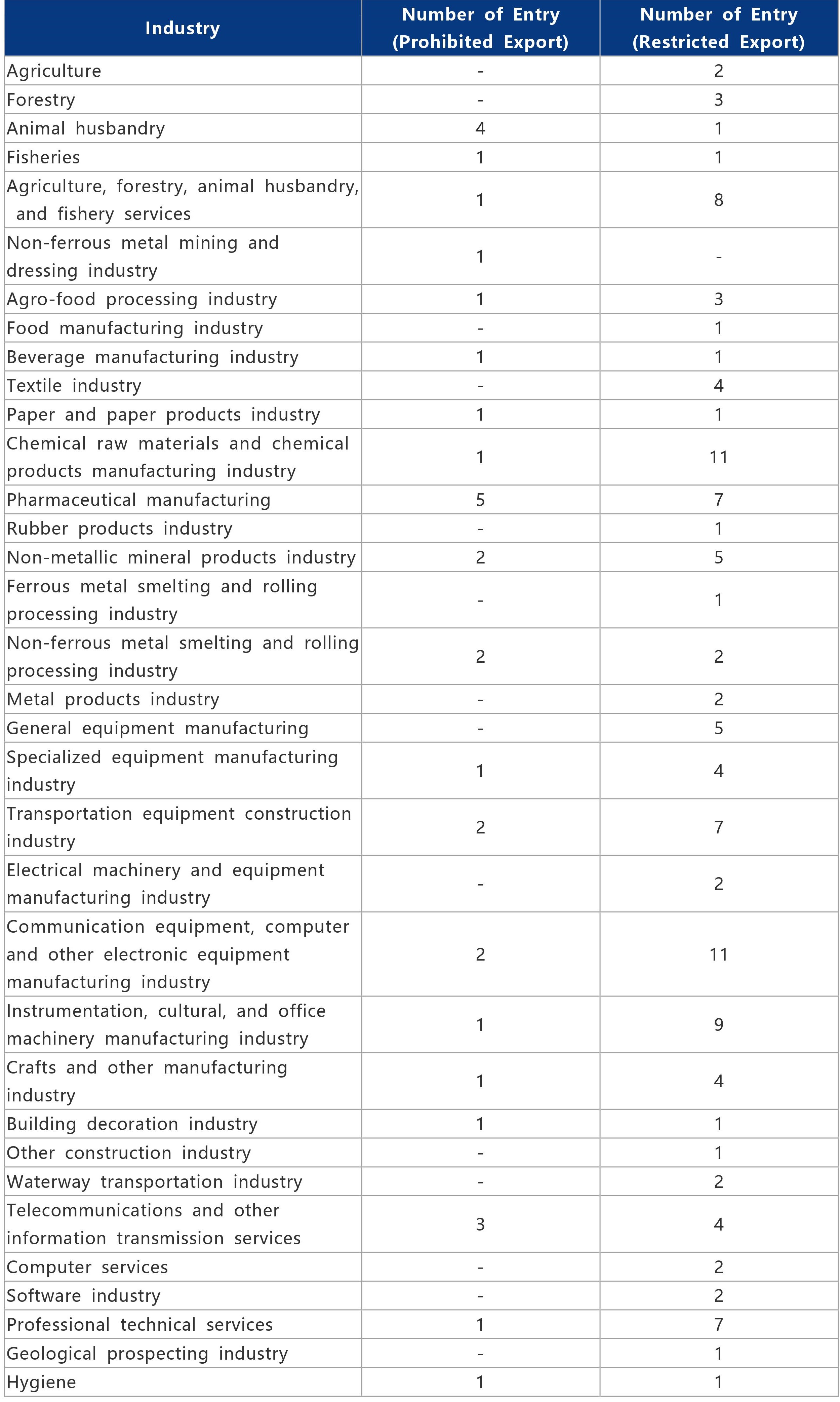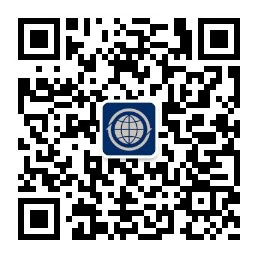China’s Ministry of Commerce (“MOFCOM”) and Ministry of Science and Technology (“MOST”) amended China’s Catalogue of Technologies Prohibited and Restricted from Export (《中国禁止出口限制出口技术目录》,“Catalogue”) on August 28, 2020.[1]
I. 53 Entries in the Catalogue have been Amended
According to the joint announcement of MOFCOM and MOST, the amendment involves 53 entries in the Catalogue in total.
First, 4 prohibited entries have been deleted, which include: (1) microbial fertilizer technology, (2) caffeine production technology, (3) riboflavin production process, and (4) vitamin fermentation technology. [2]
Second, 5 restricted entries have been deleted, which include: (1) Newcastle disease vaccine technology, (2) natural medicine production technology, (3) functional polymer material preparation and processing technology, (4) chemical synthesis and semi-synthetic medicine production technology, and (5) information security firewall software technology.
Third, 23 restricted entries have been added, which include: (1) artificial breeding technology of agricultural wild plants, (2) genetic engineering (genes and vectors), (3) cashmere goat breeding technology, (4) cashmere goat breed nurturing technology, (5) 3D printing technology, (6) application technology of construction machinery, (7) basic common technology of machine tool industry, (8) large-scale high-speed wind tunnel design and construction technology, (9) large-scale vibration platform design and construction technology, (10) petroleum equipment core component design and manufacturing technology, (11) large-scale petrochemical equipment basic process technology, (12) heavy machinery industry strategic new product design technology, (13) offshore island reef utilization and safety assurance equipment technology, (14) aerospace bearing technology, (15) unmanned aerial vehicle technology, (16) laser technology, (17) large-scale power equipment design technology, (18) password security technology, (19) efficient detection technology, (20) information defense technology, (21) information countermeasure technology, (22) basic software security enhancement technology, and (23) space remote sensing image acquisition technology
Fourth, technology specifications and key control points of 21 entries have been revised, which involve, 5 prohibited entries: (1) silkworm species, breeding and cocoon collection and processing technology, (2) spacecraft measurement and control technology, (3) mapping technology, (4) space data transmission technology, and (5) satellite application technology; and 16 restricted entries: (1) crop (including pasture) germplasm resources and their breeding technology, (2) aquatic germplasm breeding technology, (3) veterinary drug production technology, (4) chemical raw material production technology, (5) biological pesticide production technology, (6) biotechnology drug production technology, (7) tissue engineering medical device product preparation and processing technology, (8) artificial crystal growth and processing technology, (9) criminal technology, (10) medical diagnostic equipment and equipment manufacturing technology (11) space instrument and equipment manufacturing technology, (12) mapping technology, (13) space data transmission technology, (14) satellite application technology (15) information processing technology, and (16) vacuum technology.
II. Why the Amendment was Made?
Pursuant to Article 29 of the Regulations of the People’s Republic of China on the Administration of Technology Import and Export (as amended in 2019) (《中华人民共和国技术进出口管理条例(2019年修订)》, “Regulations”), the MOFCOM and the MOST have formulated and promulgated the first edition of the Catalogue in 2001, and amended the Catalogue in 2008.[3]
In the Catalogue, as amended in 2008, technologies prohibited from export include 33 technology entries of 20 industries, and technologies whose export is restricted include 117 technology entries of 33 industries:

According to the MOFCOM, it has been more than 10 years since the 2008 amendment, and with the rapid development of science and technology and the continuous improvement of China’s scientific and technological capacities and industrial competitiveness, it is imperative to update the Catalogue in a timely manner in accordance with international practice. The MOFCOM also stated that the Chinese government has always insisted on promoting development through openness, persist in open cooperation for innovation capacity, and is committed to creating a favorable environment for scientific and technological innovation and international cooperation, as well as promoting the free flow of technological innovation elements. In the future, China will further strengthen its cooperation with countries around the world on technology trade, continuously optimize the business environment for technology trade, and promote the healthy, orderly and sustainable development of China’s technology trade.[4]
III. Further Amendment is in the Pipeline
It is stated that MOFCOM and MOST are continuing its work to amend the Catalogue. specifically, they plan to further delete and amend entries therein. Meanwhile, they are aiming to significantly streamline China’s Catalogue of Technologies Prohibited and Restricted from Import (《中国禁止进口限制进口技术目录》) pursuant to the Administrative Measures on Prohibition and Restriction of Imported Technologies (《禁止进口限制进口技术管理办法》) as amended in late 2019 to further highlight the role of market adjustment.[5]
The MOFCOM stated that the Chinese government attaches great importance to optimize the business environment for technology trade and actively promotes the facilitation of technology trade. In 2020, the MOFCOM issued the Notice on Further Facilitating Technology Import and Export During the Period of Epidemic Prevention and Control (《关于疫情防控期间进一步便利技术进出口有关工作的通知》), actively promoted paperless registration of technology import and export contracts, and studied measures to ease restrictions on importers and exporters of technologies. In the next step, the MOFCOM will continue to introduce more technology trade facilitation measures, improve the technology trade promotion platform, and strengthen exchanges and cooperation with countries around the world on technology trade.[6]
IV. Implications and Takeaways
A. The Scope of Technology Export
According to Article 2 of the Regulations, “technology export” means the actions of transferring technologies from inside the territory of the PRC to outside the territory of the PRC in the form of trade, investment, or economic and technological cooperation.
In other words, any action involving transferring technology from the inside of PRC to the outside of PRC, whether by trade or investment or other methods, whether the technology transfer is the principal or affiliated content of a particular transaction, whether the party transferring the technology is an individual, legal entity or other organization of China or a foreign country, or whether there is parent-subsidiary or other affiliated relationship between the transferring party and receiving party, the Regulations shall be observed.
Article 43 of the Regulations provides that export of nuclear technologies, dual-use nuclear technologies, technologies concerning production of controlled chemicals, controlled military technologies for export shall be regulated by relevant administrative regulations.
B. Administration of Technology Export
The technology export under Regulations is divided into three categories: permitted (i.e., freely), restricted and prohibited. Contracts of permitted technology export shall be reported to the competent department for record-filing; restricted technology export requires application for license; technology export under the prohibited category is forbidden to be conducted.
Since 2007, the MOFCOM has delegated the import and export licensing authority of restricted technologies to the competent commercial departments of all provinces, autonomous regions and municipalities directly under the central government (“competent commercial department”). Upon receipt of an application for technology export, the competent commercial department shall review the application in conjunction with competent science and technology department, make a decision on approval or non-approval within 30 working days upon receipt of the application, and issue a letter of intent for technology export licensing. An applicant may engage in substantive negotiations and sign technology export contracts with foreign parties only after having obtained the letter of intent for technology export licensing. After having signed a technology export contract, the applicant shall apply for the technology export license. The competent commercial department shall examine the authenticity of the technology export contract, and decide whether to grant the technology export license within 15 working days upon receipt of relevant documents. Where technology export license is granted, a technology export license shall be issued to the relevant exporter. The relevant technology export contract shall come into effect as of the date of issuance of the technology export license.
C. Liabilities for Illegal Export of Prohibited or Restricted Technologies.
Article 44 of the Regulations stipulates that, whoever exports technologies whose export is prohibited, or exports, without a license, technologies whose export is restricted, shall be investigated for criminal liabilities in accordance with the provisions of the Criminal Law on the crime of smuggling, the crime of illegal business operations, the crime of divulging State secrets or other crimes. If the acts committed are not serious enough to impose criminal punishments, the perpetrator shall, depending on different circumstances, be punished in accordance with the Customs Law, or be given a warning, have its illegal gains confiscated, and be given a fine of not less than one time but not more than five times the illegal gains by MOFCOM which may concurrently cancel the foreign trade business license of the perpetrator.
Article 45 of the Regulations provides that, whoever exports, beyond the licensed scope, technologies whose export is restricted shall be investigated for criminal liabilities in accordance with the provisions of the Criminal Law on the crime of illegal business operations or other crimes. If the acts committed are not serious enough to impose criminal punishments, the perpetrator shall, depending on different circumstances, be punished in accordance with the Customs Law, or be given a warning, have its illegal gains confiscated, and be given a fine of not less than one time but not more than three times the illegal gains by MOFCOM which may concurrently suspend or even cancel the foreign trade business license of the perpetrator.
D. Takeaways
This amendment of Catalogue seems to have more implications for industries of pharmaceuticals, general and professional equipment manufacturing, artificial intelligence, Internet security and aerospace. Companies in relevant industries are advised to compare with the Catalogue as amended in 2008 to confirm the exact scope of technology entries that were deleted, added or revised by this amendment, to improve their compliance program for technology export in accordance with requirements under the Regulations, and to observe the export license application procedure as required by laws.
Specifically, export is allowed hereafter for those 4 deleted entries of prohibited export. Application of license is no longer required for future exports for the 5 deleted entries of restricted export. Export is prohibited for the 5 entries of prohibited export whose key control points were revised. As to the newly added 23 technology entries of restricted export and the 16 technology entries whose key control points were revised, it is required to obtain the letter of intent for technology export licensing before engaging in substantive negotiations and signing technology export contracts with foreign parties; before the actual exportation, it is also required to apply for the technology export license from the competent commercial department.
For the newly added technologies whose export is restricted, companies who are engaging in technology export negotiations, or have already signed technology export contracts but have not complete the actual exportation before August 28, 2020, are advised to suspend the negotiations or exportation and to observe the export license application procedure as required by laws. If there is a doubt on whether an application of license is needed, companies are encouraged to consult with professional agencies, or directly consult with the MOFCOM or the local competent commercial department.
[1] Order No.38 (2020) of MOFCOM and MOST
[2] All the English translations in this article of the technology entries are for reference only.
[3] Order No.12 (2008) of MOFCOM and MOST.
[4] The person in charge of the Department of Trade in Services of the MOFCOM answered reporters’ question concerning the amendment and publication of the Catalogue, http://www.mofcom.gov.cn/article/news/202008/20200802996696.shtml.
[5] Ibid.
[6] Ibid.








